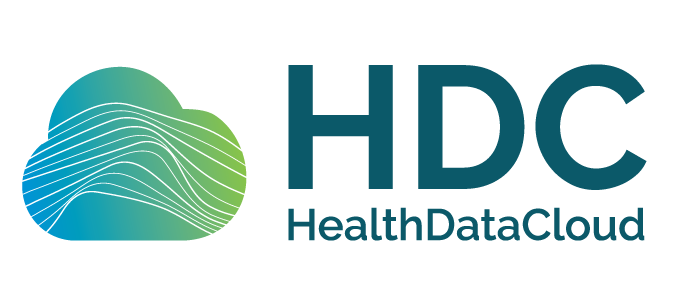Changes for page Working with HDC Datasets
Last modified by Dennis Segebarth on 2024/10/02 18:25
From version 3.1
edited by Susan Evans
on 2023/07/11 15:03
on 2023/07/11 15:03
Change comment:
There is no comment for this version
Summary
-
Page properties (1 modified, 0 added, 0 removed)
Details
- Page properties
-
- Content
-
... ... @@ -32,13 +32,13 @@ 32 32 Note: this information is stored in the Dataset’s Essential schema and is visible in the Dataset Home tab, and can be changed later (with the exception of Dataset Code) - see //Reviewing and Editing Metadata Annotations//. Mandatory fields are denoted by a red asterisk ( * ). 33 33 11. Define Dataset 34 34 11*. //Title//*: A short title for the Dataset (max. 100 characters). This entry can be changed later. 35 -11*. //Dataset Code//*: A distinct, immutable code defined by you to uniquely identify your Dataset. This entry __cannot__be changed later.35 +11*. //Dataset Code//*: A distinct, immutable code defined by you to uniquely identify your Dataset. This entry cannot be changed later. 36 36 11*. //Authors//*: One or more authors. Hit **Enter** after each entry. These entries can be changed later. 37 37 11*. //Dataset Type//: Use the default **GENERAL** or, if your Dataset uses the Brain Imaging Data Structure (BIDS) standard and you wish to use the built-in BIDS validation tool, select **BIDS** from the dropdown menu. This entry can be changed later. 38 38 11. Description: 39 39 11*. //Dataset Description//*: A longer description of the dataset. Please remember to comply with the Platform Terms of Use, Privacy Policy, and do not enter sensitive personal information in this field. 40 -11*. //Modality//: Based on the Human Brain Project [[OpenMINDS>>http://github.com/HumanBrainProject/openMINDS]]standard.41 -11*. //Collection Method//: Based on the Human Brain Project [[OpenMINDS>>http://github.com/HumanBrainProject/openMINDS]]standard.40 +11*. //Modality//: Based on the Human Brain Project OpenMINDS standard. 41 +11*. //Collection Method//: Based on the Human Brain Project OpenMINDS standard. 42 42 11*. //License//: License under which you want to share your Dataset (e.g., Creative Commons). A License is not required, yet highly recommended if you want to share your Dataset in compliance with the FAIR criteria. 43 43 11*. //Tags//: Custom keywords you create for your Dataset. Tags are displayed on the Datasets landing page and information bar. 44 44 1. When you provided all required information, click Create in the upper right-hand corner to complete the Dataset creation. ... ... @@ -131,11 +131,11 @@ 131 131 132 132 1. Open the Dataset from the Datasets landing page and select the **Metadata **tab. 133 133 1. Under **Existing Schema**, select **Default Schemas**. The schemas that have already been completed in part or full are listed in the left panel, and their details are displayed in the right panel. This includes the Essential schema template with the information you entered at the time the Dataset was created. 134 -1. ((( 135 -In the **Schemas **section on the right panel, click the **Select schema to complete **dropdown menu and select one of the Default schema templates or a Custom Schema created by you (see the section //Creating a Custom Schema //in this article). 134 +1. In the **Schemas **section on the right panel, click the **Select schema to complete **dropdown menu and select one of the Default schema templates or a Custom Schema created by you (see the section //Creating a Custom Schema //in this article). 136 136 137 137 [[image:Datasets Metadata Default Schema v2.1.5 2023-01-25.png||height="38%" width="50%"]] 138 138 138 +1. ((( 139 139 Default schema categories include the following: 140 140 141 141 * //Contributors//: Information about the persons or organizations who contributed to the Dataset. ... ... @@ -157,11 +157,14 @@ 157 157 158 158 1. Navigate to **Existing Schema**// //(left panel of the Metadata tab) and select the **Default Schemas** category. 159 159 1. Click the schema name, then click the eye icon to open the Schemas view (right side). The existing entries are displayed in the **Schemas **panel at the right side. 160 -1. To edit the entries, click **Edit** and make the changes, and 161 -1*. **X Reset** to return all entries to their original values. 162 -1*. **Cancel **to exit without saving changes. 163 -1*. **Update** to save the changes and return to the schema view. 160 +1. ((( 161 +To edit the entries, click **Edit** and make the changes, and. 164 164 163 +1. **X Reset** to return all entries to their original values. 164 +1. **Cancel **to exit without saving changes. 165 +1. **Update** to save the changes and return to the schema view. 166 +))) 167 + 165 165 Any new changes are reflected in the Schemas view. 166 166 167 167 == Creating a Custom Schema template == ... ... @@ -204,10 +204,13 @@ 204 204 1. Navigate to **Existing Schema**// //(left panel of the **Metadata **tab) and select the **Default Schema** category. 205 205 1. Click the Custom schema name, then click the **eye icon** to open the Schemas view (right side). The existing entries are displayed. 206 206 1. Click **Manage Template**. 207 -1. Make your desired edits. The following changes are possible: 208 -1*. Add new fields 209 -1*. Delete existing fields 210 -1*. Change an existing field from required to optional 210 +1. ((( 211 +Make your desired edits. The following changes are possible: 212 + 213 +1. Add new fields 214 +1. Delete existing fields 215 +1. Change an existing field from required to optional 216 +))) 211 211 1. Give the updated Schema template a new name, e.g., {name} version 2. 212 212 1. Click **+ Create New Template**. 213 213
